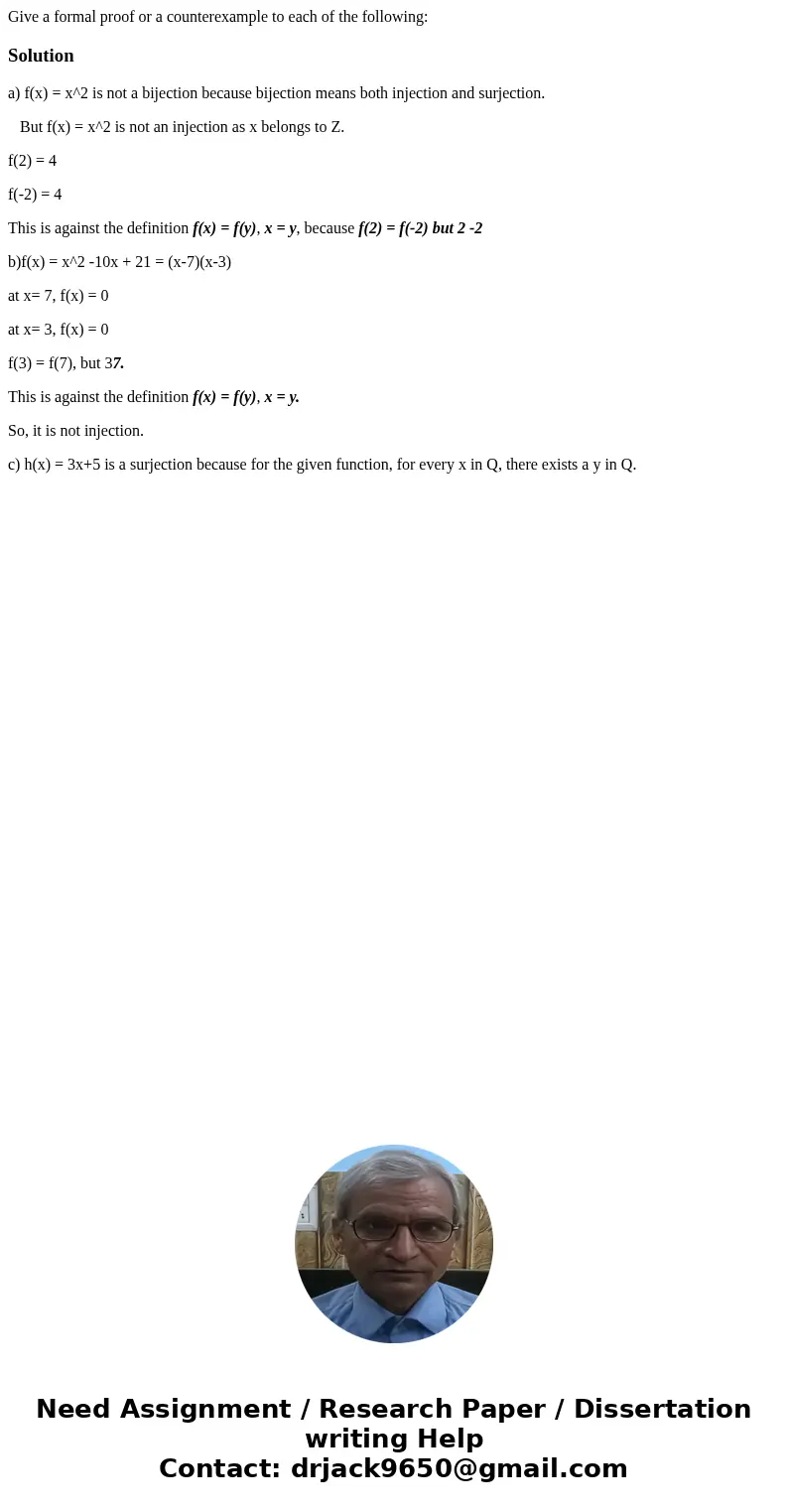Give a formal proof or a counterexample to each of the follo
Give a formal proof or a counterexample to each of the following:
Solution
a) f(x) = x^2 is not a bijection because bijection means both injection and surjection.
But f(x) = x^2 is not an injection as x belongs to Z.
f(2) = 4
f(-2) = 4
This is against the definition f(x) = f(y), x = y, because f(2) = f(-2) but 2 -2
b)f(x) = x^2 -10x + 21 = (x-7)(x-3)
at x= 7, f(x) = 0
at x= 3, f(x) = 0
f(3) = f(7), but 37.
This is against the definition f(x) = f(y), x = y.
So, it is not injection.
c) h(x) = 3x+5 is a surjection because for the given function, for every x in Q, there exists a y in Q.

 Homework Sourse
Homework Sourse